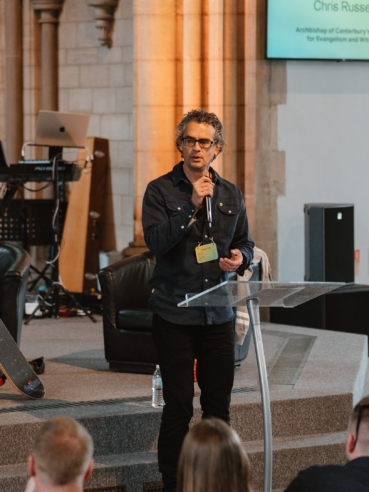Dr Grace Bally-Balogun is developing a Change Resource, helping churches navigate change by identifying the traits of change leadership. You can watch the introduction above. To hear more about the Change Resource, contact Grace.
I love Peter Drucker’s quote, “Culture eats strategy for breakfast!” Drucker had corporations and businesses in mind, but the statement is true for churches (think pews versus chairs or hymns versus sung worship).
Culture is the So What? You can have a great vision or meticulous plans but if the dominant culture isn’t willing to embrace the change, it will always resist. The culture of your church correlates with the degree of change success. In this space, I would like to introduce you to a simple tool that allows gentle discussion of culture and what needs to be reimagined to embrace much-needed change. Before that, let’s explore what culture is.
Culture is both complex and communal. Chatraw and Swallow Prior, in Culture Engagement, describe it as having three interconnected dimensions:
- Formal Ideas and Worldviews.
Cultures are filled with ideas and beliefs that are simply labelled as worldviews. A worldview is an articulated set of beliefs and ideas. A Christian worldview includes beliefs such as a God who has existed eternally in three persons and entered into human history in the person of Jesus Christ, who died, rose again, and then ascended to heaven, and will one day return. How we play out our worldview (e.g. mission), determines how we may perceive the urgency to grow younger.
- Precognitive and unarticulated assumptions.
The things that we may not necessarily think about doing but we do them because it’s how we’ve always done them (such as ‘teenagers dislike church’). They help us interpret the world around us. They are passed on through tradition, beliefs and practices. Chatraw and Swallow-Prior say culture has a particular odour. For example, when you’ve been to someone’s house and you come back with the smell of the house attached to your clothes – you have picked up the odour of the place – but that smell cannot be detected by the person inhabiting those clothes.
- Social and physical dimensions of life.
The institutions, symbols, customs and practices of a group of people. They are the carriers of points 1 and 2 above. For example, worship tradition, youth involvement in services, preaching style, baptism style, coffee after service. These things may be distinctive to the church’s culture.
Without realising it, culture is the default position by which we live and interact with the world around us. Note, our Christian worldview does not change but our culture must change to engage young people. The big question is, will the present culture of your church be conducive to growing younger? If the answer is no, it may be time to address the culture so you can welcome a healthy environment for change.
To help you begin to make the culture shift, here is an easy tool called the ‘Stop, Start, Continue’ Retrospective. You can use these three simple thoughts with your team to collaborate on what a healthy culture should look like. This is also a great way to get key people involved from the outset of your change project.
How to use ‘Stop, Start, Continue’
- Set aside some time for a workshop with your team (leadership team, ministry leads, PCC).
- Present your case for change, “We must grow younger as a church because…”
- In groups of five to six, get team members to consider each of the following on a flip chart…
- Stop – Identify the activities/systems/structures that just aren’t working or will be a hindrance to new change happening. These should end as soon as possible or be phased out.
- Start – Identify the activities/systems/structures that need to start to give space for the church to grow younger. These are things that you don’t do now but need to do.
- Continue – Identify the activities/systems/structures that have benefited the church. These should remain as core offerings/activities when the change project lands.
- Each group is to report on their three phases
- As a team, agree on your top three to five stops, starts, and continues. Turn this into a culture charter for everyone to see.
You’ve now created a fresh culture climate for your new vision. Do this activity first, before deciding what should be changed going forward.
This article was printed in Multiply 2024: The Manual, a publication that accompanied the programme of Multiply 2024, which explored multiplying a younger church. You can find related content below.













